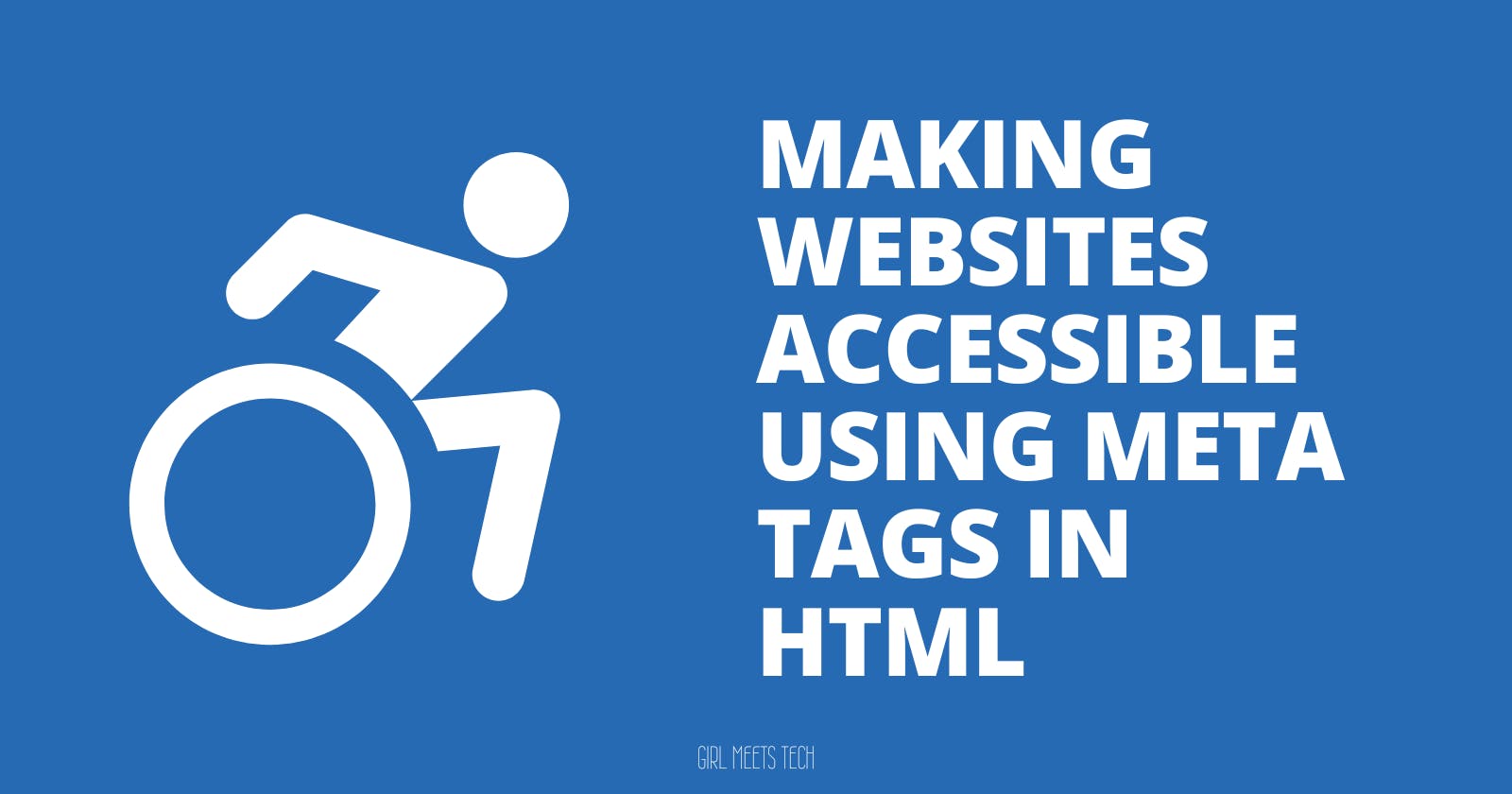Today, it's crucial to ensure that websites are accessible to everyone, including those with disabilities. Making our website accessible not only improves the user experience but also promotes inclusivity. One way to enhance accessibility is by using meta tags in our HTML code. In this article, we'll explore how meta tags can be used to make our website more accessible to all users.
What is Accessibility?
According to the Partnership on Employment & Accessible Technology (PEAT),
"accessibility means that everyone can use the exact same technology as anyone else — regardless of whether they can manipulate a mouse, how much vision they have, how many colors they can see, how much they can hear or how they process information."
What is Metadata?
Metadata is a set of data that describes and gives information about other data. It helps us understand and learn more about the things we want to know.
What are Meta Tags?
Meta tags are short pieces of text that describe the content of a page. They provide metadata about our HTML document. They are placed within the head section of our HTML code and are not visible on the webpage itself. Meta tags are typically used by search engines to gather information about a website, but they can also be leveraged to improve accessibility. The uses are:
Declaring Character Encoding
One essential meta tag for accessibility is the character encoding declaration. It ensures that the browser interpretes our website's content correctly. Let's see an example by including the following meta tag within the head section of our HTML document:
<meta charset="UTF-8">
This meta tag specifies the character encoding as UTF-8, which supports a wide range of characters from various languages.
Setting the Viewport
Ensuring adaptability to various devices and screen sizes is another crucial element of accessibility. The responsiveness of our website can be achieved with the assistance of the viewport meta tag. We would include the following meta tag within the head section of our HTML code:
<meta name="viewport" content="width=device-width, initial-scale=1.0">
This meta tag sets the width of the viewport to the device's width and ensures the initial scale is set to 1.0, providing a consistent user experience across devices.
Providing Accessibility Information
In addition, meta tags can be used to offer accessibility information that helps assistive technologies. For example, we can specify the primary language of our website using the "lang" attribute within the HTML tag:
<html lang="en">
This meta tag helps screen readers and other assistive technologies understand the language being used on the website.
Optimizing for Search Engines
While this is not directly related to accessibility, optimizing our website for search engines indirectly contributes to improved accessibility. You can use meta tags to provide descriptions and keywords to help search engines understand our content better. For instance:
<meta name="description" content="A very clear description of our website's content.">
<meta name="keywords" content="relevant, keywords, related, to, our, content">
These meta tags provide a brief description of our website's content and relevant keywords and helping search engines in displaying accurate results to users.
Conclusion
By using meta tags in our HTML code, we can enhance the accessibility of our website for all users. Making our website accessible ensures that it can be enjoyed by everyone, regardless of their abilities. So, let's strive to create a web that is inclusive and welcoming to all. Remember, accessibility is an ongoing process and it's essential to continuously test and improve our website's accessibility features. To learn more about HTML meta tags, you can visit Javatpoint's Tutorial.

